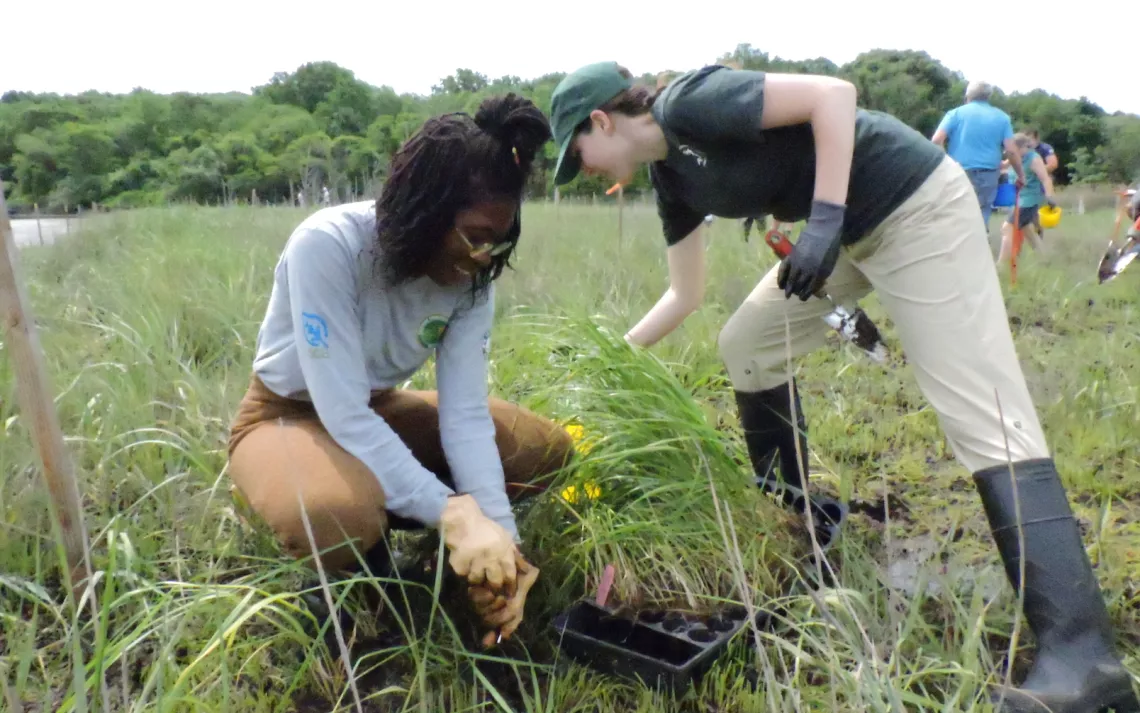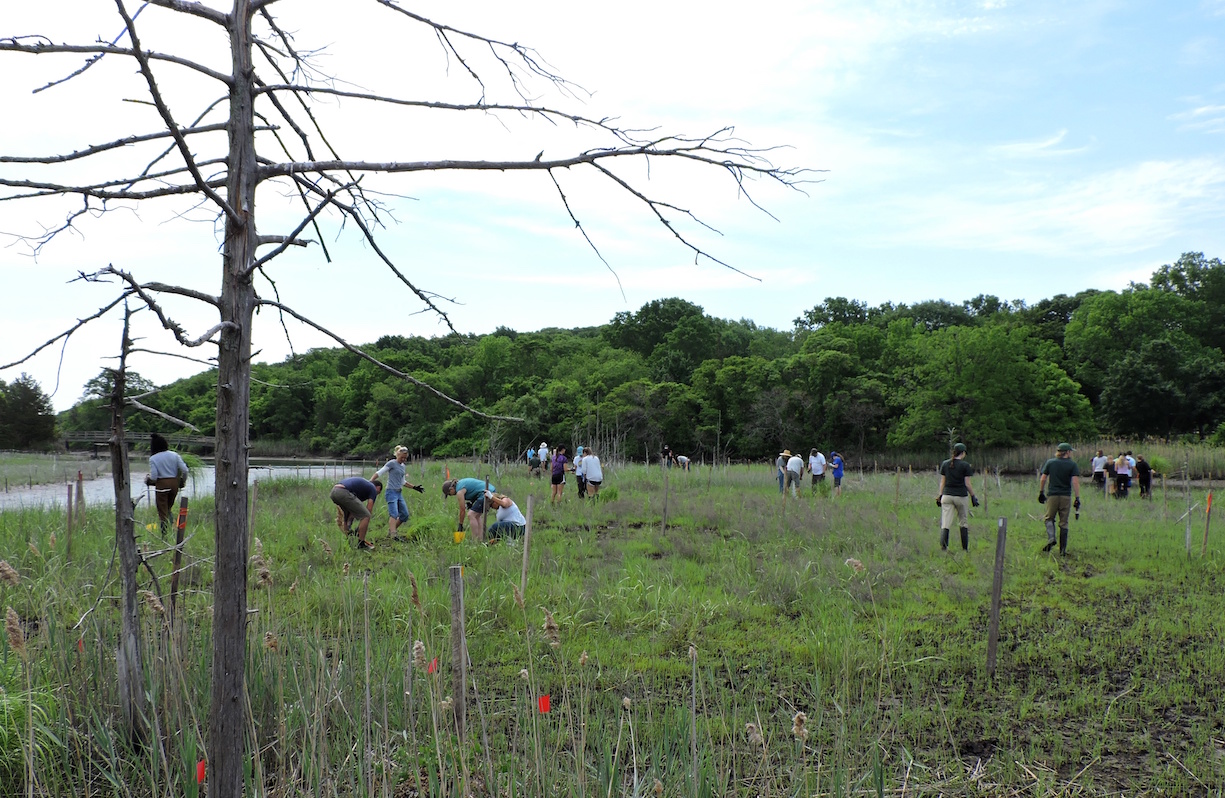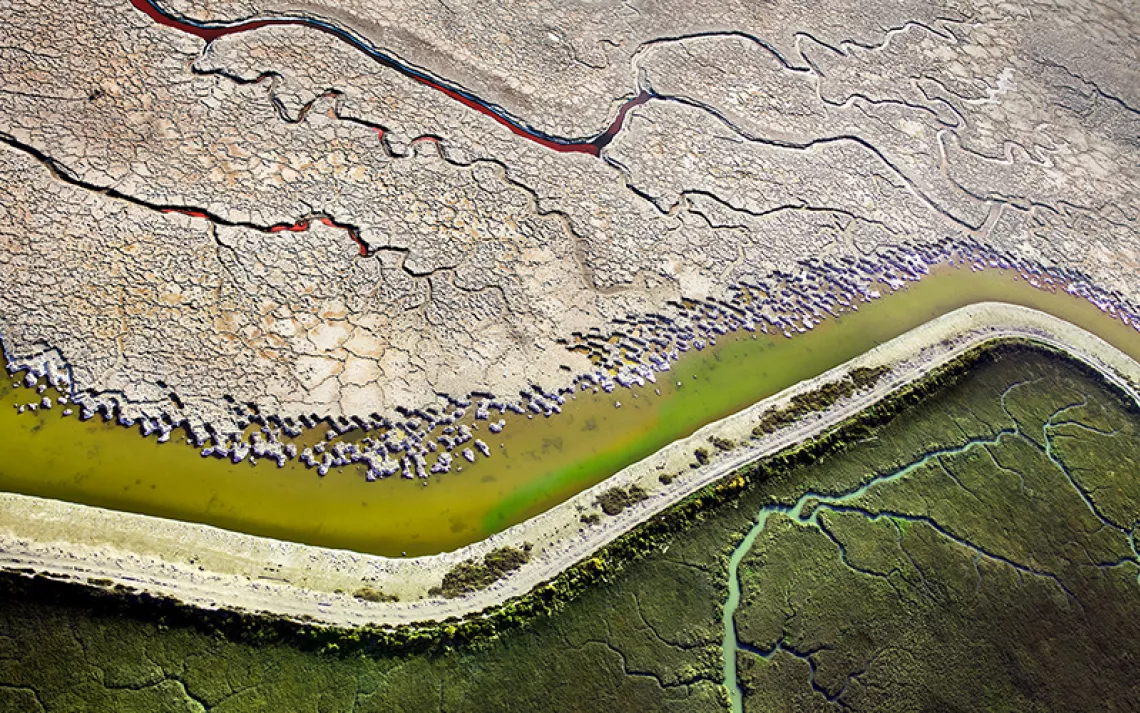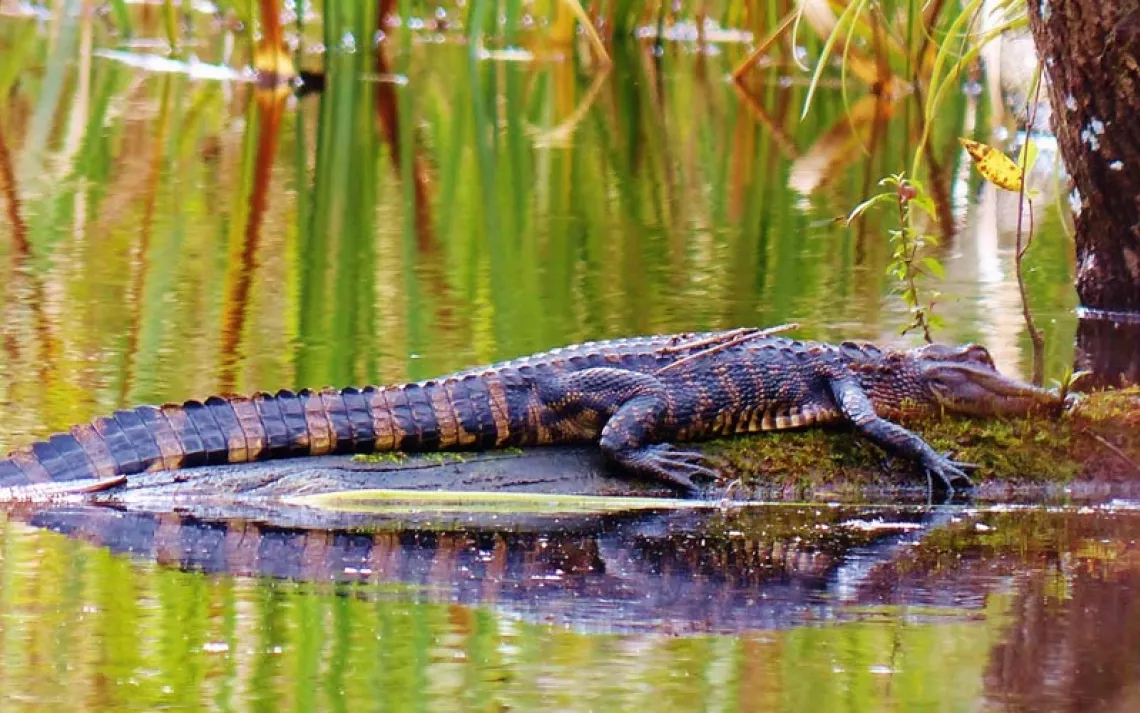Holding Back the Waves

Photographs courtesy of Laura McMillan/Save the Sound
At 10 o’clock on a Saturday morning in June, four dozen volunteers rolled into a 120-acre tidal salt marsh at Sunken Meadow State Park on eastern Long Island. In preparation for putting 2,000 plants in the ground, they all wore rubber boots, some up to their knees.
“We plant at low tide so it’s as accessible as possible,” explains Gwen Macdonald, the director of habitat restoration at the Connecticut Fund for the Environment, “but we are planting in a marsh.”
Save the Sound’s project to restore this tidal marsh is one of dozens designed to bolster the eastern seaboard in the wake of Hurricane Sandy. When Congress appropriated nearly $7.5 billion in 2013 to help with post-Sandy recovery through the Disaster Relief Appropriations Act, the lawmakers earmarked $360 million for the Department of the Interior to increase the resiliency of the East Coast in the face of climate change, sea level rise, and major storms. The money is funding projects that use watersheds, landscapes, and ecosystems to help slow down waves, reduce erosion, and cut back on flooding.
Organizations that have received grants from the earmarked funding are working to remove dams and to restore marshes and beaches throughout all nine states affected by Hurricane Sandy: New Jersey, Connecticut, New York, Virginia, North Carolina, Maryland, Delaware, Rhode Island, and New Hampshire.
At Sunken Meadow State Park on Long Island, the Connecticut Fund for the Environment has a $2.5 million grant that comes from this Hurricane Sandy recovery money.
Since the 1950s, a berm—or artificial ridge—had separated the tidal salt marsh from Sunken Meadow Creek and Long Island Sound. Without a regular influx of fresh saltwater, the spartina—the cordgrass native to the marsh—had died, and the living marsh had turned into an exposed, barren mudflat.
When Hurricane Sandy swept through, it washed out the berm, so saltwater can once again pass through. Now, to kick-start the regeneration of the marsh, the Connecticut Fund is planting three acres of the marsh with cordgrass. Volunteers planted one acre last year and one acre this year—and they’ll come back next year to plant another. The Fund is also retrofitting a nearby parking lot with porous pavement, vegetated swales, and other storm-water management systems designed to protect Sunken Meadow Creek from excessively warm, polluted storm water.
In the event of another storm, says Macdonald, both the storm-water management systems and the ecosystem itself will help protect Long Island by capturing and storing water before releasing it slowly.
Also, “when waves come up through marsh grass, it diffuses the energy, so the waves break within the marsh or before they get to shore,” Macdonald explains. “In areas where you have intact salt marsh, the waves, when they breach the shore, are less damaging, and they come up less far.” Furthermore, she adds, “the salt marshes hold the shoreline in place. When you don’t have a salt marsh, the wave energy is much stronger and the land itself is prone to erosion.”
After the volunteers planted an acre of salt marsh, the area looked something like a field of carrots, with scraggly plants about a foot apart from each other. But the acre planted last year has grown into a dense, light-green field of grass about two to four feet tall, and it’s easy to see how all that grass could slow down water.


Sign up to receive Sierra News & Views
Get articles like this one sent directly to your inbox weekly.
With this action you affirm you want to receive Sierra Club communications and may vote on policy designated by the Sierra Club Board.
The Interior Department’s post-Sandy resiliency money is funding similar projects up and down the eastern seaboard. The biggest project, which is receiving $38 million—more than 10 percent of the total funding—is the Prime Hook National Wildlife Refuge in Delaware. There, a coalition of organizations are rebuilding dunes, closing breaches, and restoring tidal channels as well as reseeding the marsh with native grasses. The 4000-acre (6.25-mile) tidal marsh is so big that it will be necessary to drop seeds on the refuge from airplanes.
Even incomplete, the project withstood its first test. When the harsh nor’easter Jonas blew into the Atlantic coast on January 23 of this year, sending a storm surge bigger than the one caused by Hurricane Sandy into the wildlife refuge, the half-finished grasses and channels absorbed the impact and slowed the waves.
Anecdotal evidence aside, it’s hard to measure the exact effectiveness of restoration efforts like these.
“What we do know is that, if you build a marsh complex, you are going to get protection,” says Rick Bennett, a scientist with the U.S. Fish and Wildlife Service, which is distributing $167 million—about half—of the Department of the Interior’s post-Sandy funding. “With engineered systems, they can say, ‘You want protection from six feet of storm surge, then you build this wall.’ We don’t have the equivalent yet, but we’re getting close. We’re working toward that.”
Green projects have other advantages over gray infrastructure like dams and levees and walls, Bennett says. For example, natural systems are self-sustaining, while “anything that gets built is subject to failure.” Manmade systems can break during big storms and need to be repaired or rebuilt entirely, while natural systems bounce back on their own.
Bennett also hopes the projects will have economic benefits for the communities that live near them. At the Prime Hook refuge, for example, he says the tidal marsh not only protects the community from storms but also draws tens of thousands of birders every year who feed the economies of nearby towns and cities when they stop for gas, food, and lodging.
These post-Sandy resiliency projects are expected to be wrapping up this fall, since the money is supposed to be mostly spent by November.
Back at Sunken Meadow State Park, the volunteers finished putting plants in the ground at 1:30 and headed back to their cars just before a summer thunderstorm broke.
“There are many, many benefits to these projects,” says Gwen Macdonald. “But, right now, the one that’s in the forefront of people’s minds is resiliency and climate change.”
 The Magazine of The Sierra Club
The Magazine of The Sierra Club



